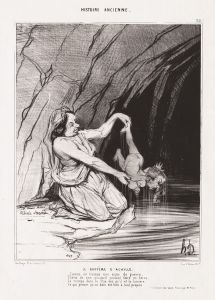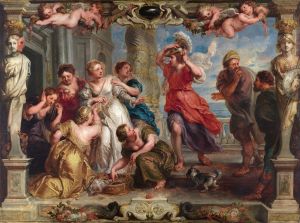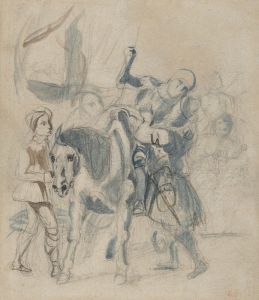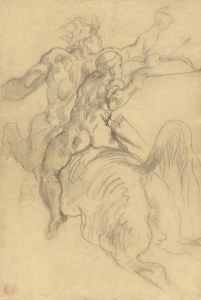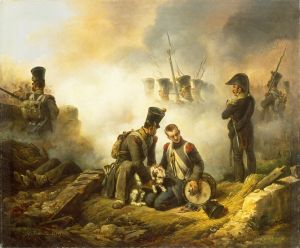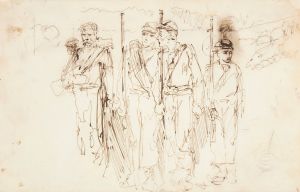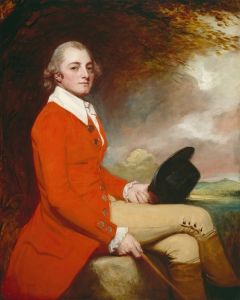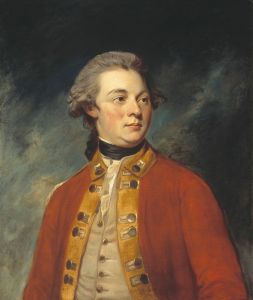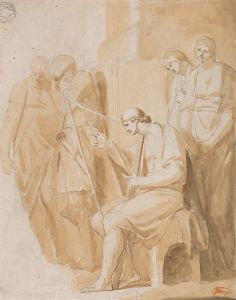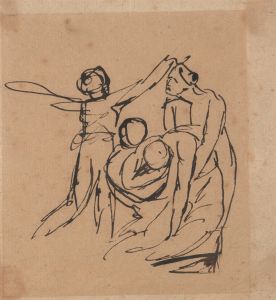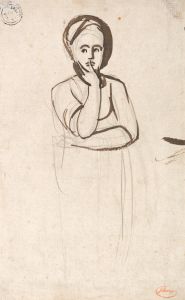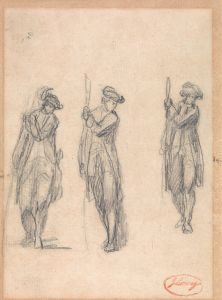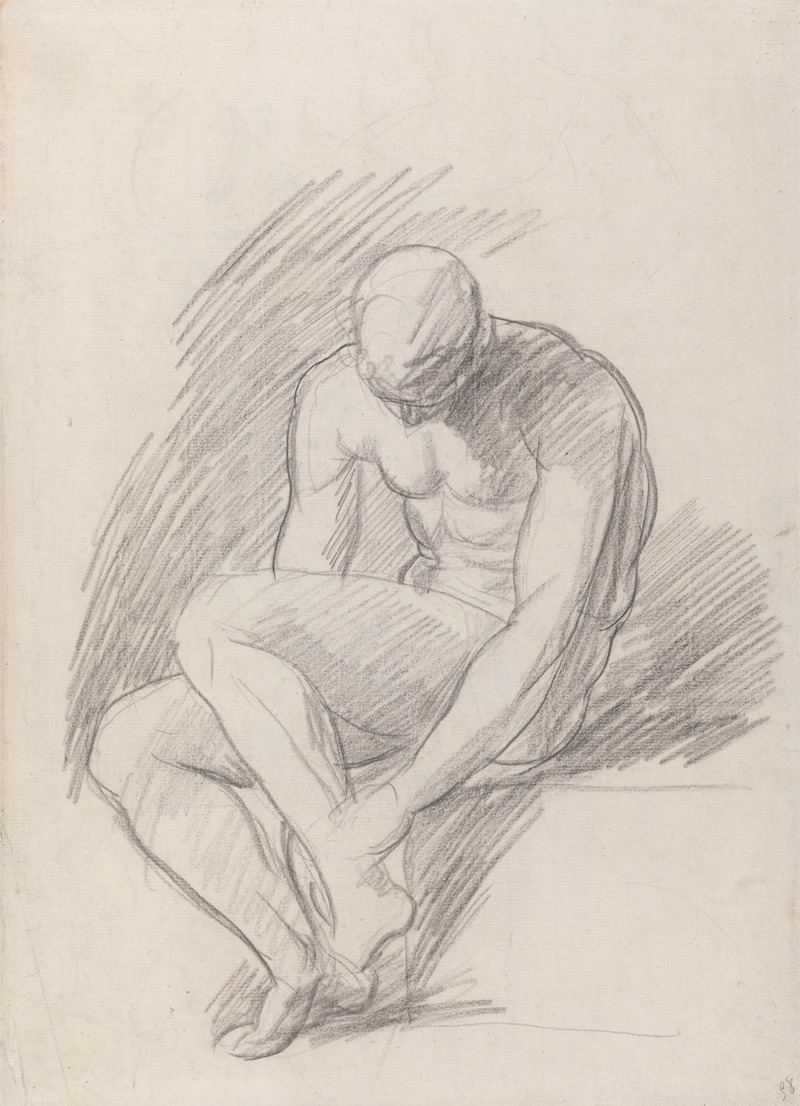
Achilles Wounded
A hand-painted replica of George Romney’s masterpiece Achilles Wounded, meticulously crafted by professional artists to capture the true essence of the original. Each piece is created with museum-quality canvas and rare mineral pigments, carefully painted by experienced artists with delicate brushstrokes and rich, layered colors to perfectly recreate the texture of the original artwork. Unlike machine-printed reproductions, this hand-painted version brings the painting to life, infused with the artist’s emotions and skill in every stroke. Whether for personal collection or home decoration, it instantly elevates the artistic atmosphere of any space.
"Achilles Wounded" is a painting by the renowned British artist George Romney, created in the late 18th century. George Romney, born in 1734, was one of the leading portraitists of his time, known for his elegant and expressive style. Although primarily celebrated for his portraits, Romney also explored historical and mythological themes, as evidenced by this particular work.
The painting depicts a scene from Greek mythology, focusing on the legendary hero Achilles. According to myth, Achilles was a formidable warrior who played a crucial role in the Trojan War. He was said to be invulnerable except for his heel, a vulnerability that ultimately led to his downfall. The scene captured by Romney illustrates the moment when Achilles is wounded, a pivotal event that highlights both his strength and his mortality.
Romney's interpretation of the mythological subject is marked by his characteristic attention to detail and dramatic composition. The painting likely portrays Achilles in a moment of vulnerability, emphasizing the human aspect of the mythological hero. Romney's use of light and shadow, along with his skillful rendering of anatomy, would have contributed to the emotional impact of the scene, drawing viewers into the narrative.
The choice of subject reflects the 18th-century fascination with classical antiquity and the moral and philosophical lessons drawn from ancient myths. Artists of Romney's time often used mythological themes to explore human nature, heroism, and the consequences of hubris. "Achilles Wounded" fits within this tradition, offering a visual exploration of themes such as bravery, fate, and the tragic flaws that define human existence.
While specific details about the painting's commission or its early exhibition history are not well-documented, it is known that Romney was active in London during this period, where he enjoyed considerable success and patronage. His works were sought after by the British elite, and he was a contemporary of other prominent artists such as Sir Joshua Reynolds and Thomas Gainsborough.
Romney's "Achilles Wounded" contributes to the broader body of art inspired by the Iliad and other classical texts, which have been a rich source of inspiration for artists throughout history. The painting exemplifies the neoclassical style, characterized by a return to classical ideals of beauty and form, which was prevalent during Romney's lifetime.
Today, George Romney's works are held in high esteem, and his paintings can be found in major museums and collections around the world. While "Achilles Wounded" may not be as widely recognized as some of his portraits, it remains an important example of his foray into historical and mythological subjects, showcasing his versatility and depth as an artist.
In summary, "Achilles Wounded" by George Romney is a testament to the enduring appeal of classical mythology in art and the artist's ability to convey complex narratives through his mastery of painting. The work stands as a reflection of the cultural and artistic currents of the 18th century, capturing the timeless themes of heroism and human vulnerability.





